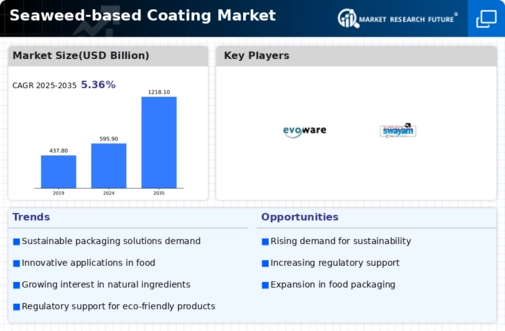Market Analysis
In-depth Analysis of Seaweed Based Coating Market Industry Landscape
The market landscape of seaweed-based coating industry has its own factors that also show trends common both to global and industry levels market. Seaweed coatings, extracted from natural sources such as algae and seaweed extracts, have grasped a lot of attention lately due to their low-impact nature on the environment and their comfortable acceptance by consumers. The better educated and the imminent desire for sustainable products have been the most influential drivers of this market expansion.
Among these market factors, one of the most important is the intensive switching to biobased and sustainable alternatives in different industrial areas. Appeal of seaweed-based coatings, as a renewable source, will not only hit upon the emerging trend of mindful consumerism but will also be comfortable to the environment. Such a tendency can be seen by naming food packing, agriculture industry, and cosmetics where the demand for eco-friendly options has promoted the application of seaweed based peel.
Also, the seaweed-based coatings with their exclusive features bring the market behavior to a new level. These coatings are excellent for the food industry in terms of barrier properties and can be used for transit of food products because of their features that keep out moisture and oxygen. However, the antimicrobial and antioxidant properties of seaweed extracts take care of the health conscious consumers by providing a safe product hence also ensuring food preservation alligning with the trendy healthy food.
Additionally, geographical distribution of seaweed resources have a very important role in determining the marketsalability. Those places with an impressive seaweed farming such as that of parts of Asia and Europe are now among the most critical producers as well as suppliers of seaweed-derived coatings. Additionally, this has encouraged manufacture of a global supply chain through which companies can task seaweed sourcing from different regions in order to achieve their sales targets worldwide.
The legislative side of it is driven by a clear trend: new regulatory standards and policies in areas of sustainability. The regulation of, and the attention of governments, and regulators worldwide, in recent times, is more pronounced in industries that cause environmental degradation, leading to a drive for a green industry where green alternatives are adopted. These new regulatory drives pertaining to sustainability would lead to the acceptance of seaweed-derived polymers as compliant solutions thereby creating a favorable environment for the higher growth of seaweed-based coatings amidst a changing regulatory context.
Companies are already involved in investigating the qualities that could be improved in seaweed coating and their areas of applications. Seaweed industry will flourish as the result of strategic partnerships between seaweed producers, research centers and end-users which increase innovations and give room for new products development, a dynamic a competitive seaweed industry will emerge eventually.





Leave a Comment